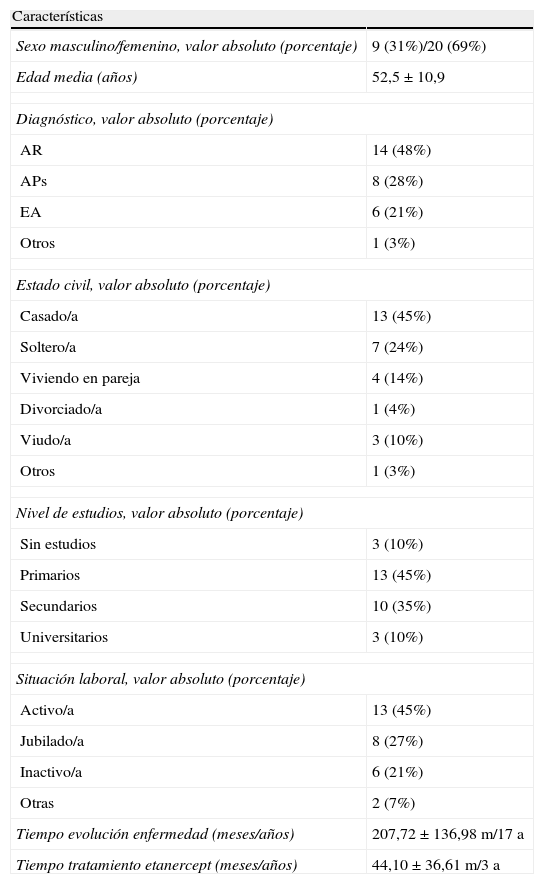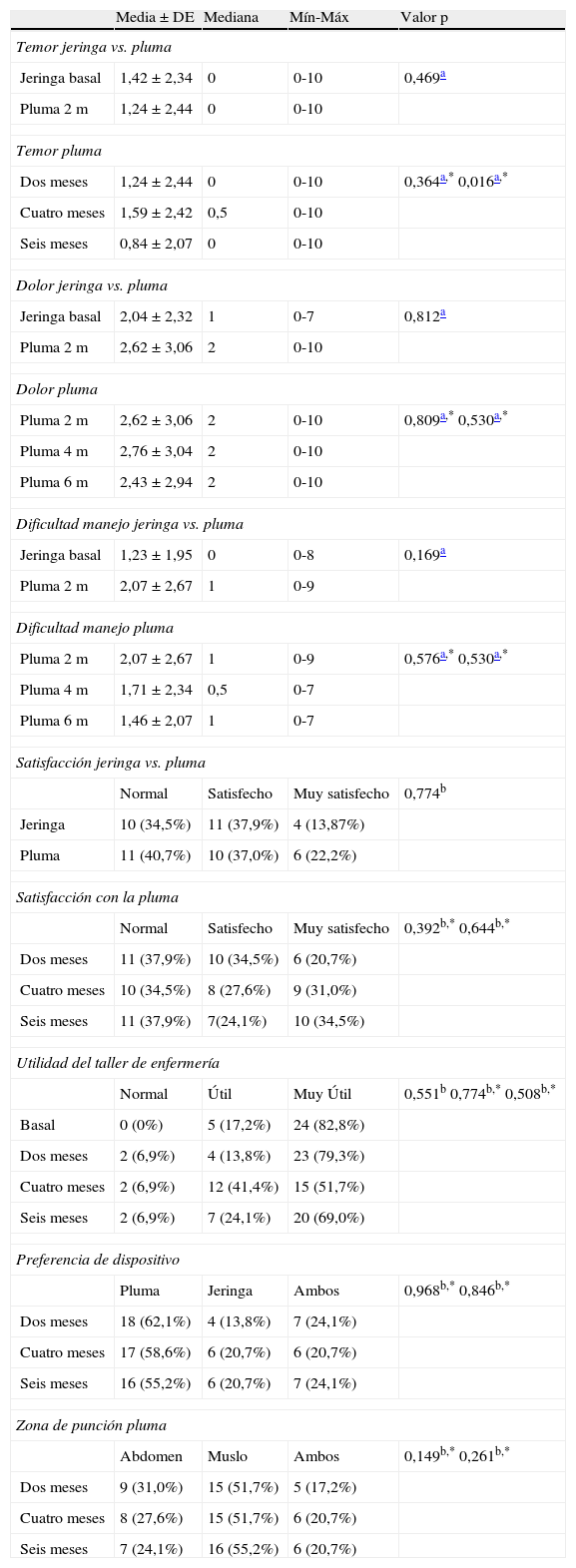Evaluar el temor previo a la administración, dolor postinyección, la dificultad de manejo y el grado de satisfacción de jeringa versus pluma de etanercept subcutáneo. Monitorizar la utilidad de la formación proporcionada por enfermería previa al inicio de la pluma y las preferencias de los pacientes tras haber utilizado ambos dispositivos.
MétodoEstudio prospectivo de una cohorte de pacientes durante 6 meses. La recogida de datos se hizo a través de cuestionarios. Análisis estadístico: SPSS 18.00. Se utilizaron la prueba de rangos y la de McNemar, considerándose como nivel de significación un α=0,05.
ResultadosSe incluyeron 29 sujetos, 69% mujeres, con una edad media de 52,5±10,9 años. El 48% eran artritis reumatoide, el 28% artritis psoriásica, el 21% espondilitis anquilosante y el 3% espondiloartropatía indiferenciada. Comparando el dispositivo de jeringa con el de pluma, no se encontraron diferencias estadísticamente significativas ni en el temor, ni en el dolor, ni en la dificultad de manejo del dispositivo (p=0,469; p=0,812 y p=0,169 respectivamente). A los 6 meses, el 59% de los pacientes refirieron estar satisfechos o muy satisfechos con la pluma, el 93% encontraron el taller de enfermería útil o muy útil y el 55% prefirieron la pluma.
ConclusionesLa pluma de etanercept es otra opción de dispositivo subcutáneo para los pacientes con artritis crónica. El presente trabajo sugiere que los talleres educacionales por enfermería previos al inicio de dicha terapia subcutánea son recomendables.
The aims of this study are to evaluate the level of fear of post-injection pain prior to the administration, the difficulty in handling the device, and the level of satisfaction of patients using a pre-filled syringe versus an etanercept pen, as well as to evaluate the usefulness of the training given by nursing staff prior to starting with the pen, and the preferences of patients after using both devices.
MethodA prospective study was designed to follow-up a cohort of patients during a 6 months period. The data was collected using questionnaires and analyzed with SPSS 18.00. Rank and McNemar tests were performed. Statistical significance was pre-set at an α level of 0.05.
ResultsA total of 29 patients were included, of whom 69% female, and with a mean age 52.5±10.9 years. Of these, 48% had rheumatoid arthritis, 28% psoriatic arthritis, 21% ankylosing spondylitis, and 3% undifferentiated spondyloarthropathy. There were no statistically significant differences either with the fear or pain or handling of the device between the syringe and the pen (P=.469; P=.812; P=.169 respectively). At 6 months, 59% of patients referred to being satisfied or very satisfied with the pen. Almost all (93%) found useful or very useful the training given by nursing staff prior to using the pen, and 55% preferred the pen over the pre-filled syringe.
ConclusionsThe etanercept pen is another subcutaneous device option for patients with chronic arthritis. According to the present study, nursing educational workshops before starting this therapy are recommended.
Artículo
Comprando el artículo el PDF del mismo podrá ser descargado
Precio 19,34 €
Comprar ahora










